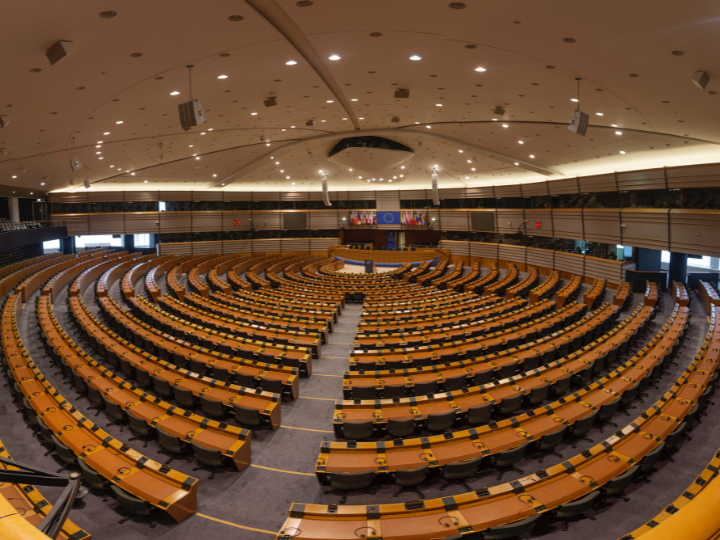by David King*
Hurtling towards deeper climate shifts, unless we act now there is little chance of a manageable future for humanity. The possibility of maintaining an average global temperature rise below 1.5°C, and the implied manageability that brings, is increasingly difficult.
Already at 1.3°, the world’s greenhouse gas (GHG) emissions are increasing, not falling. All models keeping to the 1.5° limit assume huge immediate behaviour change and emissions slowdowns. To date, these assumptions are demonstrably wrong.
Naming a 1.5° target wrongly suggests that this offers a manageable future. Today we see 50°C in India and Pakistan, which is only made a hundred times more likely by global warming. The human body is unable to survive such heat, farmworkers require cool spaces meaning their work becomes impossible, food shortages occur as crops cannot survive, and demand for air conditioning brings power outages. This is just today’s reality – it is steeply worse for each extra 0.1°C.
Today’s reality, tomorrow’s catastrophe
The economic impacts that follow every climate event make lives unsustainable. Failed farmers move to cities looking for economic opportunities, informal settlements without infrastructure become larger and more vulnerable, and real people struggle to get a footing as the world changes around them. For many, the question becomes how to reverse the world from the catastrophes already faced rather than trying to ensure things get only a limited amount worse.
I could equally speak of floods in Germany or China, wildfires in California, storms in the Philippines or Florida, heatwaves in British Columbia or unprecedented cold snaps in Texas – all of which happened in the last few months. They vary in type, duration, and location, but they share two things – they are related to climate change, and they cause ordinary people life-changing misery. Each weather phenomenon causes deaths, suffering, economic loss, and setbacks and all are many times more likely because of current levels of global heating. Such events only become more common and severe with each 0.1°C rise.
Current ground zero
Urgent changes are also happening in the Arctic. It is a critical part of the global warming trend, and the annual temperature rise there is now four times faster than the global average.
As the Arctic temperature rises, sea-ice thins and melts – revealing larger areas of blue ocean to the summer sun. Where ice reflects heat away, the blue seas absorb the sun’s energy, accelerating local heating effects. Every winter, the sea is covered again in ice. However, the thickness is now insufficient and rapidly melts in the summer. As the area of exposed ocean increases, the absorption of heat accelerates – speeding and stretching the spread of ice-melt.
What happens in the Arctic doesn’t stay in the Arctic
The Arctic links into global weather systems in surprising ways. The local, rapid summer temperature rise distorts the high-altitude polar jet stream, shifting temperature and weather patterns around the globe.
Extreme distortions of the jet stream allow cold weather to move south, and paradoxically, in the same distortion pattern, hot weather drifts uncharacteristically north. So Arctic changes speed up global warming, drive sea-level rise in the mid- to longer-term, and directly cause many extreme floods, fires and heatwaves around the globe.
Arctic changes are at or beyond a tipping point. Even if average global temperature rise stabilises at 1.5°C, the Arctic summer sea ice will not recover. Thus, the Arctic region will continue to drive more heating, sea-level rise, and extreme weather events.
Reduce, Remove, Repair
A manageable future for humanity needs several coordinated interventions. The 1.5°C limit demands rapid emissions reductions and removing excess GHGs from the atmosphere, shifting us gradually back towards pre-industrial levels. We must repair the Arctic to dampen chaotic global weather events, acceleration of heating, and sea-level rise. This ‘Reduce, Remove, Repair’ approach is known as ‘the 3Rs’, coined by CCAG.
Leading with climate repair
The relentless self-accelerating pattern of ice-melt, Arctic heating, and polar jet-stream distortion has kicked off weather patterns that cause havoc around the world. Worryingly, there appears to be no possibility of the system correcting itself. Man-made emissions started this sequence of events, but emissions reductions will not interrupt the feedback loop of melting and heating. That’s why, in addition to reduction and removal of GHGs, several steps are needed to fix the Arctic in order for the global pressure it exerts to be calmed.
The idea of deflecting sunlight away to cool the Arctic has often been discussed. Extreme schemes propose mirrors-in-space, sooty flakes, or aerosols in the stratosphere. A simpler possibility is increasing the quantity and whiteness of cloud cover over the Arctic, so sunlight is reflected away, reducing ice-melt. Gradually, the ice would thicken, and ‘repair’ of the Arctic would begin.
Methods that mimic nature are also potential options for repair. There is scope for small pumps, afloat at sea, powered by sunlight and waves to pump salty spray into the air. By natural processes, this creates bright white clouds with a sufficient cooling effect to restore summer ice. Such examples are small-scale but expandable and managed through local communities – bringing governance and economic opportunity right down to local and indigenous community level.
A manageable future starts with Arctic repair – but it is just one part of a bigger strategy. We must reduce emissions, remove excess GHGs from the atmosphere, and repair parts of our climate – and we must do it now.
*Founder and Chair, Centre for Climate Repair at Cambridge, University of Cambridge
**first published in: www.weforum.org




 By: N. Peter Kramer
By: N. Peter Kramer

